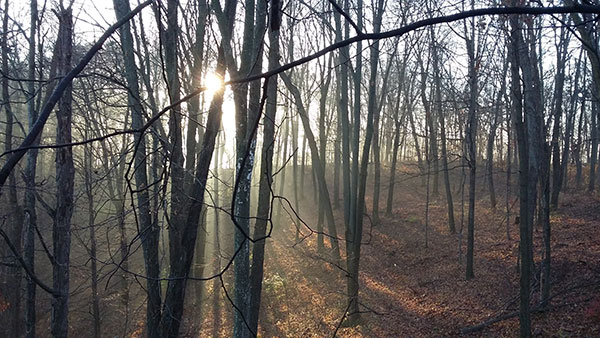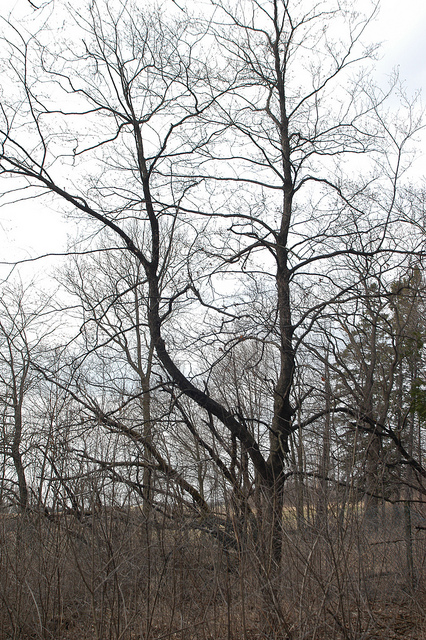
A Man with a Plan: Dan Fischer
Dan Fischer intended for years to become a more active steward of his 20-acre woodland in northern Richland County. But like many landowners, he found it tough to get started amid all of life’s other responsibilities.
Then last fall, he read a My Wisconsin Woods e-news article outlining a landowner grant program and its yearly application deadlines – one of which was quickly approaching. “I thought, “why don’t I just get this done?” Dan says. “So that’s what got me started on my forest management plan.”

Today, Dan not only has a forest plan in place – paid for with money from the Natural Resources Conservation Service (NRCS) – but he’s already submitted a second grant application to control invasive species. Once those are cleared, he expects to pursue funding to do timber stand improvements.
His quick progress has left him wondering why he didn’t get started sooner. But mainly he’s just happy he did. “I think it’s a good plan,” he says. “And I know that if I don’t do anything, [my land] is going to get overtaken with brush and invasive species.”
Navigating the process
Dan’s biggest concern for his property has long been invasive species; he’s got honeysuckle, multiflora rose, garlic mustard, among others. But when he inquired about grants to combat them, he discovered he needed to write a forest plan first to be eligible.
So after reading about NRCS’s Environmental Quality Incentives Program (EQIP) in the My Wisconsin Woods e-newsletter, Dan set about applying for money to develop a plan. The process was easy, he says.
“I just sent [NRCS] an email, and they told me which forms I needed to fill out,” he explains. “Then I just stopped by their office and dropped the forms off. They explained a little bit more about the program and took things from there.”
In the ranking process EQIP uses to decide which grant applications to fund, forest stewardship plans are a high priority. Thus Dan was told he had a good chance of receiving a grant. And, sure enough, he learned a few months later that he had.

NRCS next sent him a list of approved foresters with special training, called Technical Service Providers, for Dan to contact for help with his plan. A forester then came out to his property, wrote the plan based on Dan’s goals, and Dan submitted the bill to NRCS for reimbursement.
While EQIP funds helped him create the plan, Dan points out that the program is strictly voluntary. It’s entirely up to him now which recommendations to follow – or whether to follow any of them at all. He also appreciates how the plan is grounded in his aspirations for his property.
“If you want to manage for wildlife, they’ll tell you how to attract more wildlife to your property. If you want to log it, they’ll tell you which trees are the best to take,” he says. “They help you with your goals. They don’t say, “Here’s what you have to do.”
Valuable lessons
The forester who walked Dan’s woodland confirmed some of his suspicions about the property. He agreed, for example, that Dan should tackle his invasive species problem before removing any trees to improve the timber stand. Years ago, Dan also planted 30 oak trees in a small, sunny clearing to benefit wildlife, an action the forester likewise endorsed.

Still, Dan says with a laugh, “I had some idea of what I was doing, but I didn’t really know. The forester confirmed that some things I was doing were right, and then with others he had some suggestions.”
Dan was surprised to learn, for instance, that his woodland contains many valuable black walnut trees, which are surrounded now by smaller ash trees. Since emerald ash borer will likely kill the ash trees sooner or later, the forester recommended cutting them down to give the walnut trees the sunlight they need to grow more vigorously.
He also found out that his practice of girdling mature aspen trees to kill and remove them wasn’t quite on the mark, because girdled aspen doesn’t regenerate well.
“The forester said that if I want to manage for wildlife I should cut down the aspen trees, and then they’ll re-sprout from the roots and stumps,” Dan says. “The wildlife just loves it: deer and grouse and others.”
At the same time, he worried that he might have too many deer, because the hundreds of seedlings he saw on the forest floor never seemed to “amount to anything.”
But he learned that browsing by deer wasn’t the problem; again it was lack of sunlight. The seedlings were being overshadowed by ironwood (hop hornbeam), a small, understory tree that can be invasive.
So Dan will eventually remove the ironwood, too, with the sequence of actions guided by the plan. “I think it makes sense how we laid it out,” he says. “Get rid of the invasive species first and then the ironwood. And then clear the aspen to get regeneration.”
Now that he’s settled on a path forward, he has some advice for others who may be hesitating like he once did. “I would say, ‘just do it.’ You’ll be happy you did,” Dan says. “It can’t hurt you at all. It can only help.”
Visit https://mywisconsinwoods.org/questions/taxes-and-finances/conservation/ to learn more about the NRCS Environmental Quality Incentives Program (EQIP) and other landowner grant programs.
